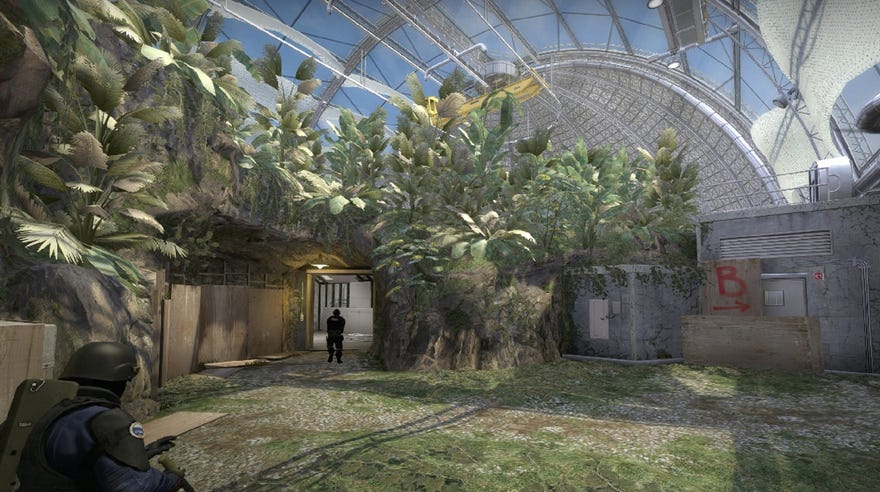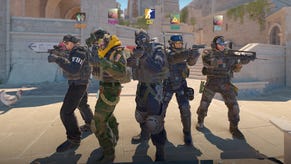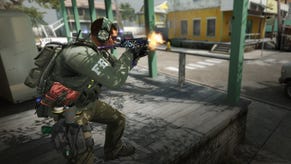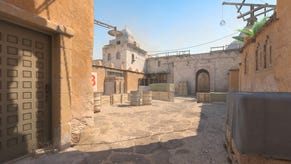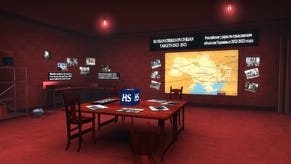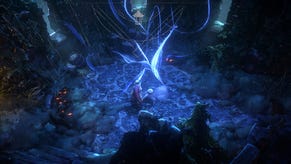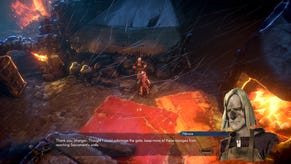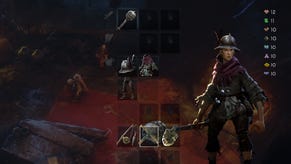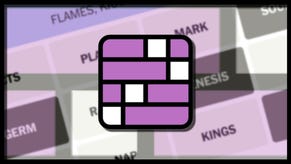CS:GO - Game Modes guide
A detailed look at every game mode in CS:GO.
When you’re new to CS:GO it’s very easy to become overwhelmed by the choice of game modes. Where’s the best place to start? How can I get my matchmaking rank? There are a lot of things to consider before jumping in and trying to find a mode that suits you best. Whether you’re only interested in the Competitive Ranked side of things, or whether you’re looking for a less stressful mode focused on just having fun, we’ve covered every available mode in CS:GO.
Competitive

Competitive mode is similar to what you might see if you watched professional CS:GO. Two teams consisting of five players each go head to head in a thirty-round match. The team to score sixteen points wins the game. After fifteen rounds (halftime), each team switches sides. Each round is one minute and fifty-five seconds long, however, if the T-side manages to plant the bomb then the round timer resets to forty seconds. On average, a single Competitive game will last around forty minutes, though they can extend to just over an hour if the match is very close. Should both teams reach fifteen rounds each, the game will end in a tie.
Unlike Casual mode, it is not possible to switch sides during a match. If any player leaves the game during the match, they are punished by being banned from Competitive play for a set period of time. Should the same player continue to quit in the middle of games within a week, they could be banned for up to a month at a time. Teams are able to vote to surrender during a match, ending the game prematurely.
In order to show that you know your way around CS:GO, Valve has made it so players are forced to rank up to Private Rank 2 before playing Competitive mode.
If you are struggling to earn enough XP, you should check out our guide that outlines the best ways to level up fast.
Casual
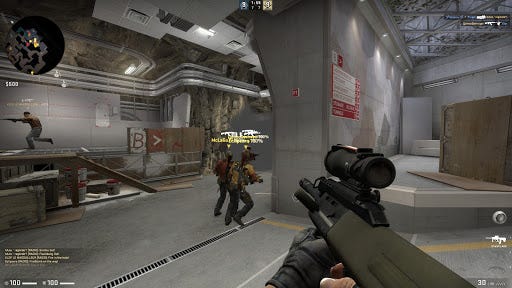
Casual matches are very similar to Competitive matches with a few alterations. The team size in Casual increases to ten people per side, the economy system is nowhere near as punishing, meaning teams will be evenly matched throughout the entire game, and the game ends after either side manages to win eight rounds. The minor differences include shorter round times, limits to the number of grenades you can purchase, as well as team collision and friendly fire being turned off.
To emphasise the fact that these matches are casual, players are able to spectate the game after they die. This includes being able to watch the enemy team as well as their own from both the first and third person perspective.
Contrary to what people may believe, Casual matches are affected by your matchmaking rank. This doesn’t strictly mean that your opponents will be exactly the same as your Competitive rank, but they should be loosely based on the level of opponents you are likely to see in your real matches. This makes playing Casual games much more useful for practicing as, in theory, you shouldn’t be able to crush your unranked opposition. That being said, Casual is no replacement for Competitive. For warming up before Competitive matches, consider playing Deathmatch instead as the fast paced nature of that mode should help with your aim and reactions.
Deathmatch
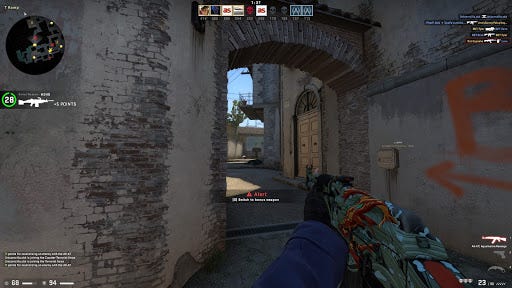
Deathmatch will likely be one of the first modes that you jump into upon purchasing CS:GO. Facilitating sixteen players on a map and giving everyone the freedom to pick any weapon, this is a great way to familiarise yourself with the weapons in the game. Deathmatch still requires players to pick either T or CT side, imposing the same limitations on certain weapons that you’d see in other modes (for example, you can only equip an AK-47 on T-side). However, once you’ve settled on a weapon, you’re free to hunt down those on the opposing team and try your best to make it to the top of the leaderboard before the round has ended.
Similarly to other modes, eliminating enemies will secure you points, yet Deathmatch also introduces the ‘Bonus Weapon’, which cycles random weapons and gives you more points per elimination for a small period of time. With quick random respawns after you die, this mode is fast-paced and competitive, making it the perfect mode to jump into if you fancy a quick game without any lengthy ties. In addition to using dedicated training maps in order to improve, consider warming up before a Competitive match by hopping into a round of Deathmatch.
Wingman

Introduced in the Operation Hydra event in 2017, Wingman takes Competitive play to a much smaller arena. Taking place on much smaller portions of the above maps, focused on just one bombsite, Wingman is 2v2, making it the best mode to jump into with a friend. These games work on a best-of-sixteen-round basis, with each round lasting one minute and thirty seconds, ensuring that the games aren’t too long. Apart from these changes, the rest of Wingman operates very much like the Competitive mode.
Players have an entirely separate rank for the Wingman and Competitive modes, so if you haven’t tried out this mode before, you’ll need to complete ten placement matches to obtain your rank. Wingman is a good pick for those who wanted a streamlined competitive experience.
More popular CS:GO guides:
- 1. Guide - CS:GO - Guide 2018
- 2. Best Weapons - CS:GO - Best weapons 2018
- 3. Recoil Control - CS:GO - Recoil control guide
- 4. Crosshairs - CS:GO - How to change crosshair
- 5. AWP - CS:GO - AWP guide 2018
War Games
The War Games category bundles two well-established CS:GO modes (Arms Race and Demolition) with a mode that existed in previous Counter-Strike titles. This mode (Flying Scoutsman) was then revived as a result of the Operation Hydra event back in 2017.
Arms Race

Those familiar with Call of Duty may remember the ‘Gun Game’ mode where players start with a pistol and work their way up to better weapons with each elimination. Arms Race is a very similar mode, starting players with SMGs, progressing through a series of randomised weapons until someone reaches the golden knife and manages to eliminate one final player. As it stands, players will work through these categories, in this order: three SMGs, four rifles, two shotguns, two sniper rifles, one machine gun, four pistols and the golden knife.
Unlike many ‘gun game’ modes, Arms Race requires players to obtain two kills with each weapon in order to progress to the next level. With quick respawns and notifications alerting players when they are dominating another player/being dominated by another player, this mode also features a ‘Team Leader’ on each side, highlighting the top T and CT players. These two players will glow, revealing their location to others, making it more difficult for them to reach the golden knife stage. If a player manages to kill the Team Leader on the opposing team, they will progress to the next weapon instantly (unless they are also a Team Leader). Knifing someone will also hinder their progress, putting them back to the previous weapon.
Arms Race is a neat mode for showing off your mastery with every weapon. As always, it's nice to practice hitting those clean headshots with various guns, yet this mode is more for fun than for actual training.
Demolition
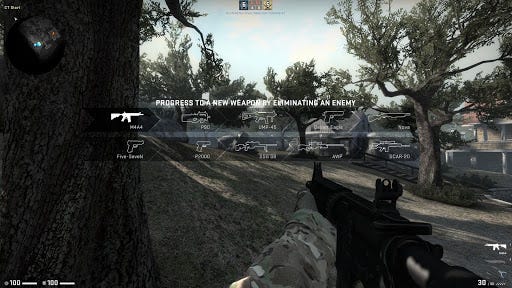
Demolition is easily one of the least popular modes in CS:GO, although that doesn’t mean that you should write it off entirely. Serving as a hybrid of a bomb defusal and Arms Race scenario, this mode removes the team economy and option to purchase weapons, instead requiring players to score eliminations in order to receive a different weapon. Players who are able to eliminate more than one opponent will be awarded extra utilities in the subsequent round, such as HE Grenades. As you’d expect, you cannot pick up other players’ weapons or unused utilities in this mode. With games lasting a maximum of twenty rounds, the first team to win eleven rounds wins the entire game.
While other modes like Deathmatch and Casual give players a chance to get used to some of the maps in the Competitive pool, Demolition features different maps that are somewhat reserved for the War Games category now. Bank, Lake and Safehouse are often selected in this mode, so if you’re unfamiliar with these maps, you’ll have to spend a bit of time getting acquainted with them. While Demolition offers a nice challenge on top of the common bomb defusal scenario, this isn’t a particularly beneficial mode for training purposes.
If you’re hoping to improve and are looking for some advice on where to start, consult our Best Training Maps guide.
Flying Scoutsman

Flying Scoutsman is based off the old community game mode, Scouts and Knives, from Counter-Strike 1.6 and Counter-Strike: Source. In this mode, players are given only the SSG 08 and a knife with no option to purchase any other weapon. The gravity in this mode has been reduced, hence the flying part in the name. In addition to this, the midair spread has been removed to allow for players to shoot in the air without their shots going all over the place.
Originally the Flying Scoutman game mode was added as an official mode during the Operation Hydra event that ran from May 2017 to November 2017. Due to its popularity, Valve decided to add this mode as a permanent fixture. CS:GO can be quite stressful when you go on a losing streak, thankfully the Flying Scoutsman mode is perfect when you start to get frustrated with the game. Similarly to Demolition, the map pool is slightly different compared to the other game modes. Dizzy is a Flying Scoutman exclusive map, with areas created specifically to allow players to surf and reach places they otherwise couldn’t thanks to the lower gravity. Alongside Dizzy, the other three maps you may recognise are Shoots, Safehouse and Lake.
If you are looking to practice your sniper skills (albeit in strange conditions) and have some fun at the same time, you should find this mode to be quite handy.
Operations
CS:GO has hosted several operations since the game launched in 2012, with the most recent one being Operation Hydra (May 2017). Operations are special events, released as purchasable DLC. In the past, these events have featured new maps, modes and a campaign that players can complete in order to earn stars, which enable players to upgrade their Operation coins (Bronze to Diamond).
Valve are not currently running an Operation event however, there are a number of remnants from older Operations that have become permanent fixtures in CS:GO. Austria, a map that has just been added to the Competitive map pool, saw its debut in Operation Hydra, alongside the Flying Scoutsman mode (now in the War Games category) and Wingman mode.
It has been well over a year since the last Operation rolled out, although Valve haven’t dropped any hints that they’ll be releasing a new one anytime soon.
